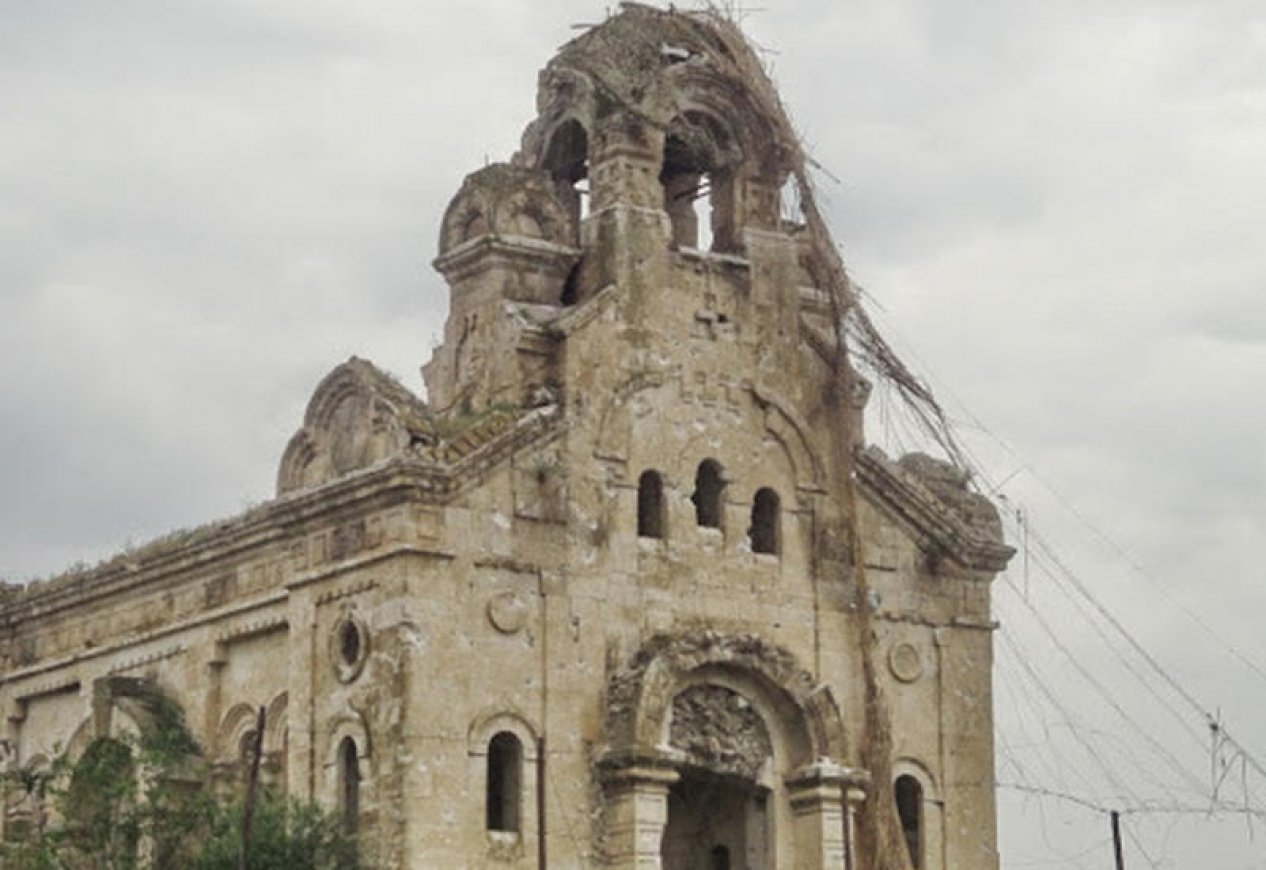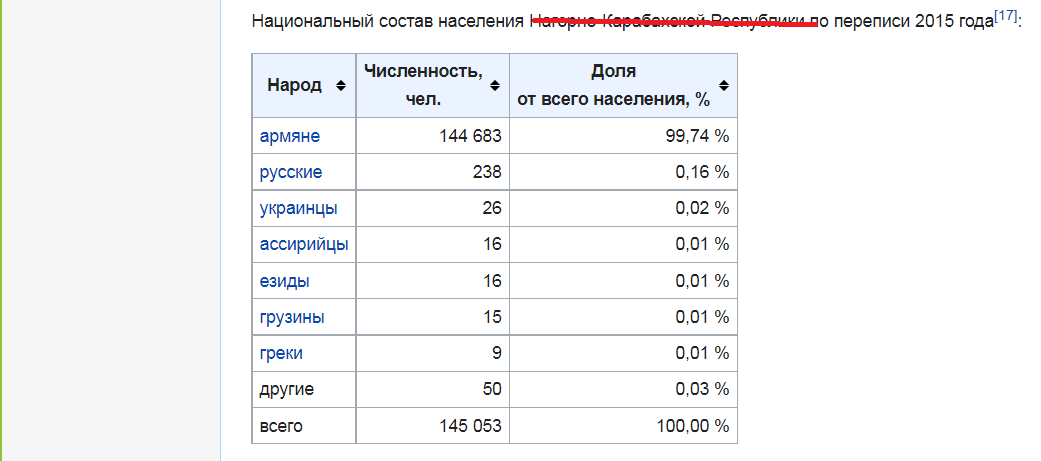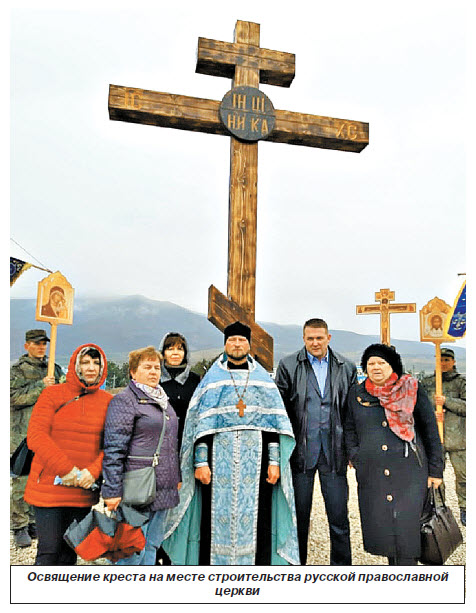
Reports are being circulated in the media and social networks on behalf of the ‘Russian community of Nagorno-Karabakh’ about the mythical 5,000 Russians and citizens of Russia suffering from the alleged blockade of the Lachin road. The so-called Secretary of the Assembly of Russian Compatriots of the puppet ‘NKR’ Andrei Sergeev makes statements about the ‘hardest test’ of ‘more than 5,000 Russian compatriots’ living in the Karabakh region of Azerbaijan.
It is very surprising that the so-called Russian community of ‘Nagorno-Karabakh’ miraculously gathered more than 2,500 people in 2021, and now it has grown to more than 5,000. Where did so many people of Russian nationality come from in the region, from where even the Armenians themselves are fleeing? Probably from the same place where more than 120,000 Armenians came from, although in the last pre-war years there were barely 40,000 people there, and even they tried to leave by any means. And after the war, this figure was halved.
Faktyoxla Lab has tried to analyze what means the ‘Russian community of Nagorno-Karabakh.’
Where did the figure of more than 5,000 Russians in Karabakh come from?
Let's start with the fact that according to the so-called census in the occupied Karabakh, carried out in 2015, 238 persons of Russian nationality and 26 Ukrainians lived in this territory. According to the last Soviet census (1989), there were 2,500 representatives of Slavic nationalities there.

That is, the Slavic population of Karabakh was catastrophically reduced as a result of not the Second, but the First Karabakh War, and the Russians fled when their settlements passed under the control of not Azerbaijanis, but Armenians.
Despite the expulsion of the Russian population from Karabakh, the Armenian side throughout the years of occupation tried to use the ‘Russian factor’ against the peace processes in the South Caucasus.
In the vast majority of propaganda materials about the justification for the occupation of Azerbaijani territories by Armenian troops, the ‘Russian community’ is not mentioned. The ideologists of Armenian nationalism say nothing about the Russians in Karabakh, but only about the Armenians. The ‘Russian community of Karabakh’ project itself appears in the information field only once every few years in single publications and disappears again. Even supporters of the occupation of Karabakh in Russia, who are looking for any way to explain the criminal behavior of Yerevan on Azerbaijani soil, seem to have known or do not know anything about such a ‘community.’
Apparently, this is an unsuccessful project of one of the Armenian nationalists, which they from time to time try to revive without much success. Nevertheless, the manifestation of such activity precisely after the Second Karabakh War and precisely in the context of calls for the protection of the Orthodox heritage in the zone of responsibility of Russian peacekeepers cannot but attract attention.
Another provocation using the ‘Russian factor’ was the proclamation of the Russian language as the second official language in the territory controlled by the peacekeepers. Given that this issue has not been raised for 30 years, and there are practically no Russians in the region, the decision of the Karabakh Armenians did not and does not reflect the real situation, but pursues far-reaching geopolitical goals.
In fact, the Russian community of Nagorno-Karabakh was forcibly expelled by the Armenian side during the occupation, says Anastasia Lavrina, deputy chairperson of the Russian community of Azerbaijan, commenting on the destruction of Orthodox churches in Karabakh by Armenia.
The occupation of Karabakh by Armenia left homeless not only Azerbaijanis, but representatives of other peoples living in Azerbaijan. Among those who were deprived of shelter in places of historical residence were Molokans from a small village in Karabakh, who lived in peace and harmony with their Azerbaijani neighbors for more than 150 years. In 1993, the Russian Old Believers, having lost everything, were expelled by the Armenians from their homes. They never hid the fact that at the first opportunity they would return home, restore their state farm, plant vineyards. Elena Timofeeva is one of the inhabitants of the Karabakh village, who remained to live in Azerbaijan. In an interview with ‘Moscow-Baku’, she spoke about her dream to see her native lands again.
The village is called Goyarkh, it belongs to the Tartar district of Azerbaijan. Even in the Soviet years, Armenians did not give peace to the Russian village. “They 'shared' the Tartar River with us. Half was with the Armenians, the other part was with us. Even then, they were at enmity, did not let us on their side. People began to leave the village even before the start of the conflict, when there was only talk of an imminent war. The Azerbaijani army saved 52 Molokans who remained there from the Armenian massacre in 1993. Today, after the victory of Azerbaijan, the inhabitants of Goyarkh want to return to their village. These are 27 families from Russia who want to return to Azerbaijan, to their village in Karabakh, in the hope that there will be no more war and no one will expel them from their native land,” she said.

Despite the allegations of Armenians and the so-called ‘Russian community of Nagorno-Karabakh’ about alleged persecution and ethnic cleansing of the Russian population by Azerbaijanis, the Russians of Azerbaijan themselves know the truth. Russians live in Azerbaijan completely freely and have equal rights with all other nationalities of the united Azerbaijani people, they are patriots of their country, Russian soldiers and officers fought on the fronts of the Karabakh war on an equal basis with everyone else and achieved victory over the invaders.
The Armenian side asserts that ‘the Russians living in Karabakh have no problems in preserving the national culture, traditions and language.’ But the attitude of the Armenians during the period of occupation to the Russian spiritual heritage is evidenced by the condition of the Orthodox churches that remained in the occupied territories. As the late Bishop of the Russian Orthodox Church, Archbishop Alexander (Ishchein) of Baku and Azerbaijan, noted, “Unfortunately, there is information about the poor condition of Orthodox churches in the liberated territories. The external and internal appearance of the Orthodox Church of John the Baptist in Shusha was changed. The dome was removed from it, and domes were removed from the bell towers - they were replaced by the attributes of the Armenian church, which, from the point of view of Orthodoxy, is one of the sects of the Monophysite heresy. The Armenianized church was called Kanach Zham. When today the supporters of the occupation of Karabakh demand the protection of the Christian heritage in the former occupation zone, in fact, they are talking about protection of their crimes against the true religious and cultural image of the South Caucasus from exposure.
The Church of the Transfiguration of the Lord in Khojavend is in a terrible state, although in Soviet times it was a beautiful temple. Now there are only four walls, overgrown with weeds and trees.”
The Russian Church in Khojavend, built in 1894, is of value not only as a place of religious worship, but also as an architectural monument. But in the early 1990s, it ended up on the territory occupied by Armenia and fell into decay in 30 years.

The Russian church in Shusha was built even earlier, in 1847. After the occupation of Nagorno-Karabakh in 1992, the Armenians destroyed its dome, erected their own and renamed it Khanach Zham. This happened, of course, without the notification and permission of the local diocese of the Russian Orthodox Church.
Armenian vandalism extends not only to the historical, cultural and religious heritage of ethnic Azerbaijanis in the Caucasus, but even to the shrines of fellow believers and political allies. As an example, one can see the Russian Orthodox Church of the Transfiguration of the Lord in Gevorgavan (Kuropatkino).
This is the only Russian Orthodox Church on the territory of Nagorno-Karabakh. It is located on the territory of the Khojavend district, which was occupied in February 1992 by the Armenian Armed Forces.
In the immediate vicinity of the church there was a military facility of the Armed Forces of Armenia. Photos of the dilapidated church were posted online by Armenian blogger Vahe Martirosyan.
Martirosyan showed photos of the Church of the Transfiguration in Gevorgavan from 1988 and 2000. The photo shows that the church at that time was in good condition. There was a roof and bars on the windows. Given that the occupation of the Khojavend district took place in 1992, and the state of the church in the photos of 1988 and 2000 has not changed, we can conclude that the church was not damaged during the first Karabakh war, that is, it did not become a victim of the fighting. In 2014, Vahe Martirosyan visited this church and showed photos of its state at that time. The roof and front were destroyed. The iron bars have been removed from the windows, there were severe damages on the facade on the western side.
Armenian vandals left their ‘autographs’ - Armen, Garik, Karmen and others.
The church was not in the line of fire and the gunshot traces on the facade from the side where the Armenian Armed Forces were located were not accidental. Given that the church was in close proximity to the military facility of the Armenian Armed Forces, the military-political leadership of Armenia was well aware of everything that was happening.

In 2009 in Khankandi the ‘ceremonial laying’ of the first stone in the foundation of the Orthodox Church of the Intercession of the Mother of God and the Exaltation of the Cross took place. Even a delegation from Russia arrived in Karabakh to participate in the ceremony of the beginning of the erection of the temple. Many years passed, but things did not go beyond the ‘laying’ of the ‘first stone.’

And, finally, the very name ‘Russian community of Nagorno-Karabakh’ is wrong. There is no territorial unit called Nagorno-Karabakh on the territory of Azerbaijan.
In a word, the organization called ‘The Russian Community of Nagorno-Karabakh’ is a fake structure used by the Armenian side for propaganda purposes. In fact, the Russian population also suffered from the Armenian occupation, and the spiritual heritage of the Russian people was destroyed by the invaders. We also established that the Armenian side is trying to inflate the number of Russians in Karabakh, while even Wikipedia, where Armenians actively participate in its moderation, shows completely different numbers.




















